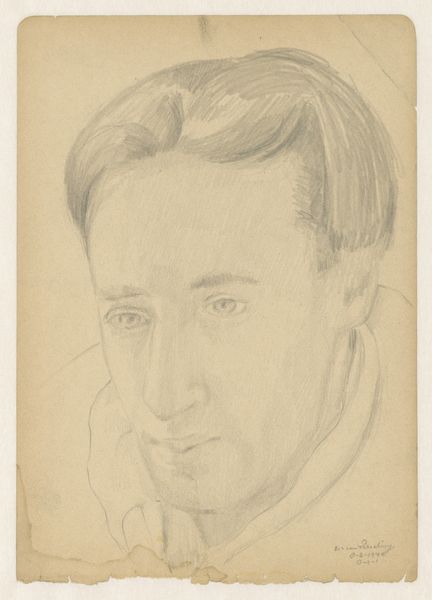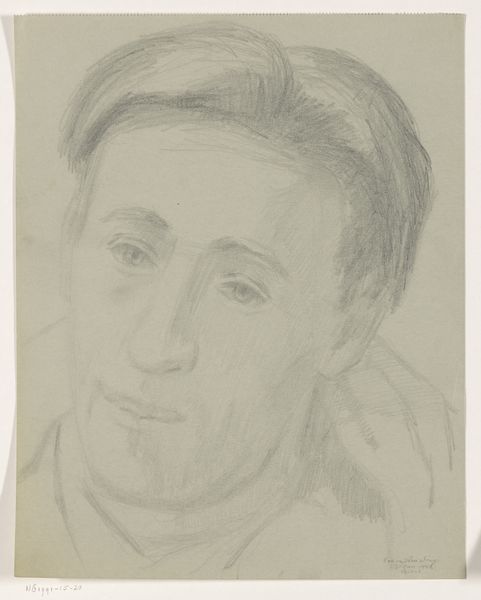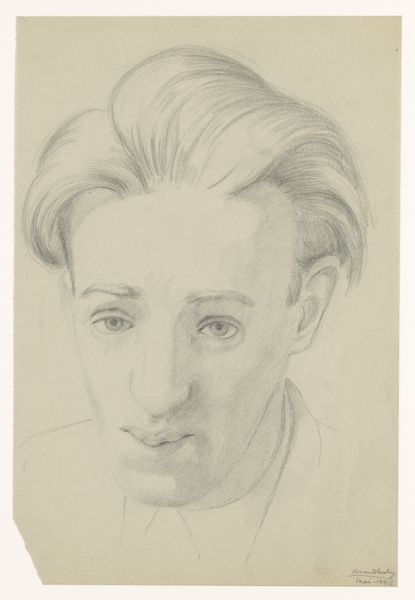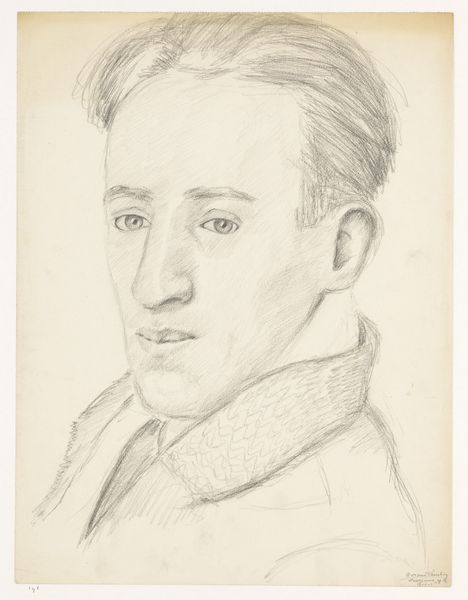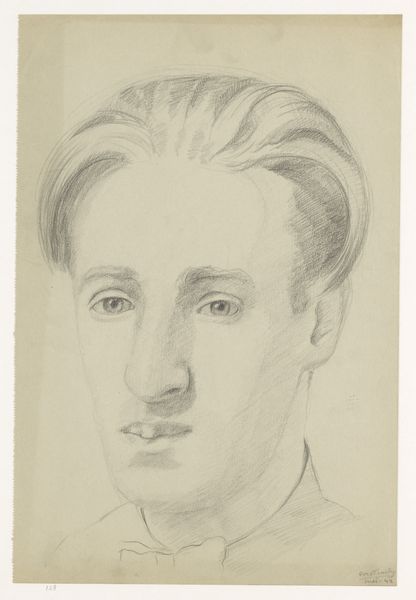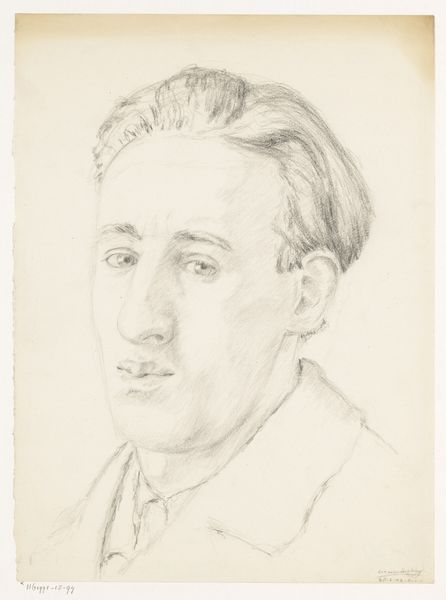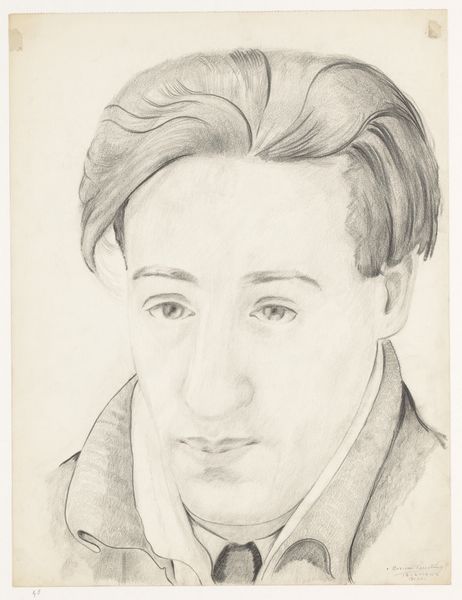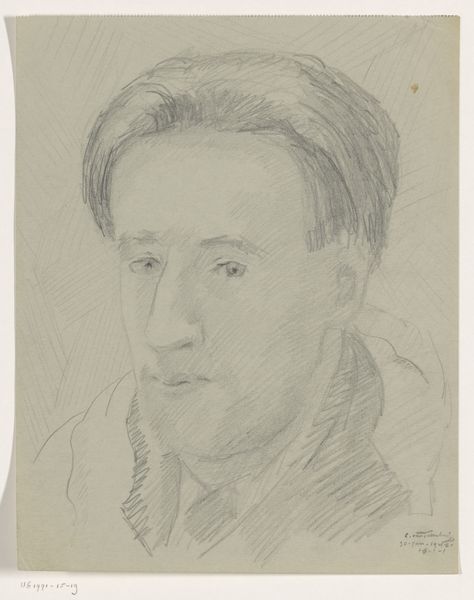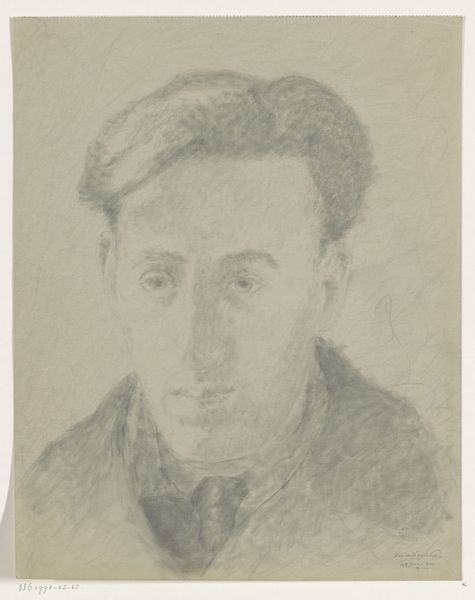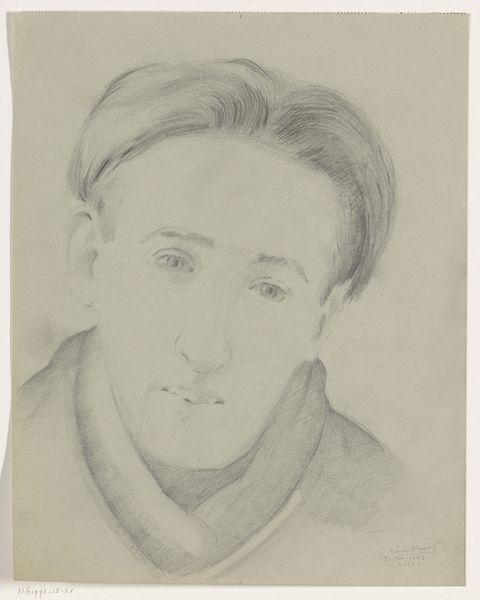
drawing, pencil, graphite
#
portrait
#
drawing
#
self-portrait
#
caricature
#
pencil drawing
#
pencil
#
graphite
#
realism
Dimensions: height 30.5 cm, width 24.5 cm
Copyright: Rijks Museum: Open Domain
Curator: Welcome to the Rijksmuseum. We're standing before Cor van Teeseling’s "Self-portrait: B-1-1, 4 februari," a graphite and pencil drawing likely from 1942. Editor: My first impression is one of melancholy. The muted tones and the subject’s introspective gaze convey a sense of quiet desperation. Curator: Note the artist's deft handling of light and shadow. He uses subtle gradations to model form, emphasizing the structure of the face and the play of light across the surface. The texture is incredible, achieved with economical yet precise marks of graphite. Editor: It's interesting to consider this work within the context of its creation. The date suggests this self-portrait was made during the Nazi occupation of the Netherlands. Could this somber portrayal reflect the anxieties and uncertainties of that time? Curator: Perhaps. The work embodies elements of realism in its approach to depicting the figure; the proportions of the face appear generally correct, the subject depicted matter-of-factly. Editor: It seems difficult, though, to separate this piece from its historical backdrop. Self-portraits during wartime often served as a means of preserving identity, and as acts of quiet resistance. Perhaps Van Teeseling used this opportunity to wrestle with personal or political anxieties. Curator: One could say this piece embodies elements of the classical canon—a bust, without a body. See the simplification of form, emphasizing only the essential. His gaze transcends individual emotion; instead it points towards a wider sense of the artist’s individual existence and moment of being. Editor: I read a profound vulnerability in it. To me, it’s an enduring image that reminds us to contemplate both personal struggles and broader cultural realities during the era it was made. Curator: Agreed, the pencil work alone presents such nuance. It allows for multiple interpretations, allowing us to look within both the piece and ourselves. Editor: Yes, and that layering of narratives and historical and aesthetic experience provides for very compelling art.
Comments
No comments
Be the first to comment and join the conversation on the ultimate creative platform.
